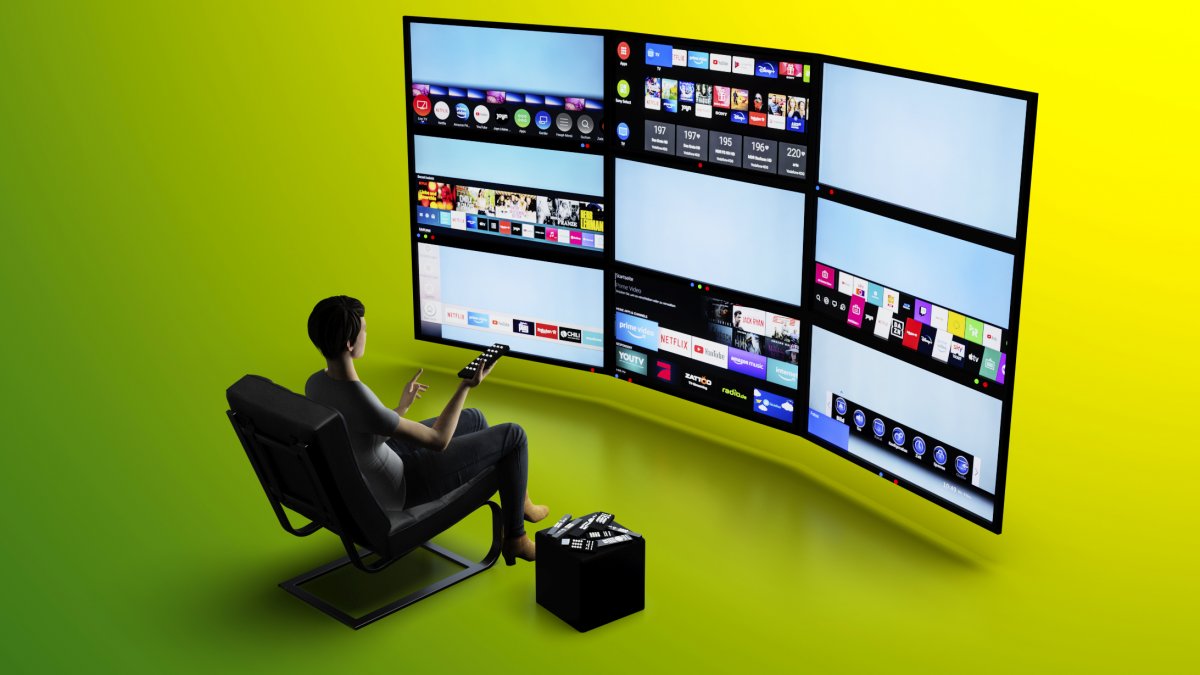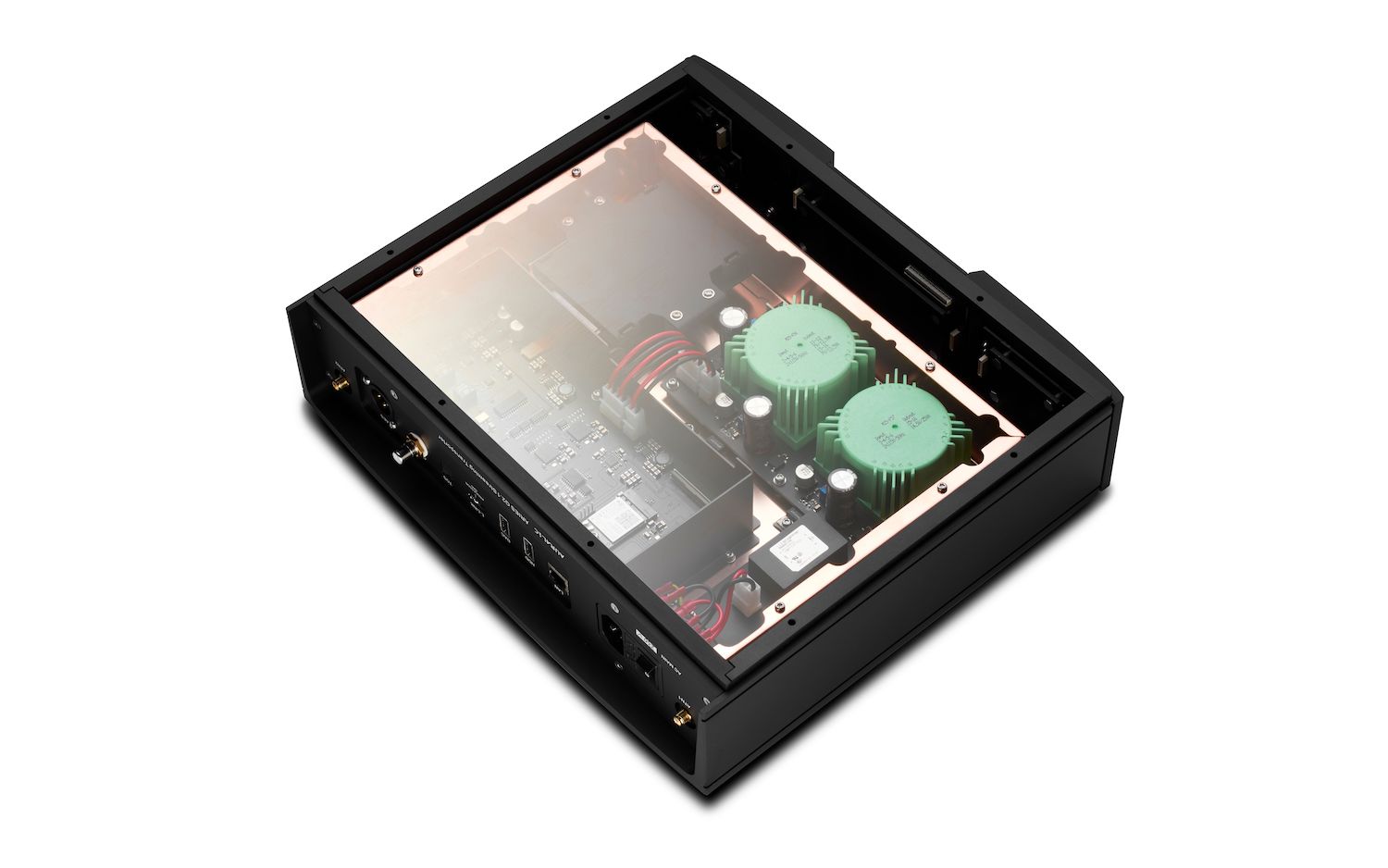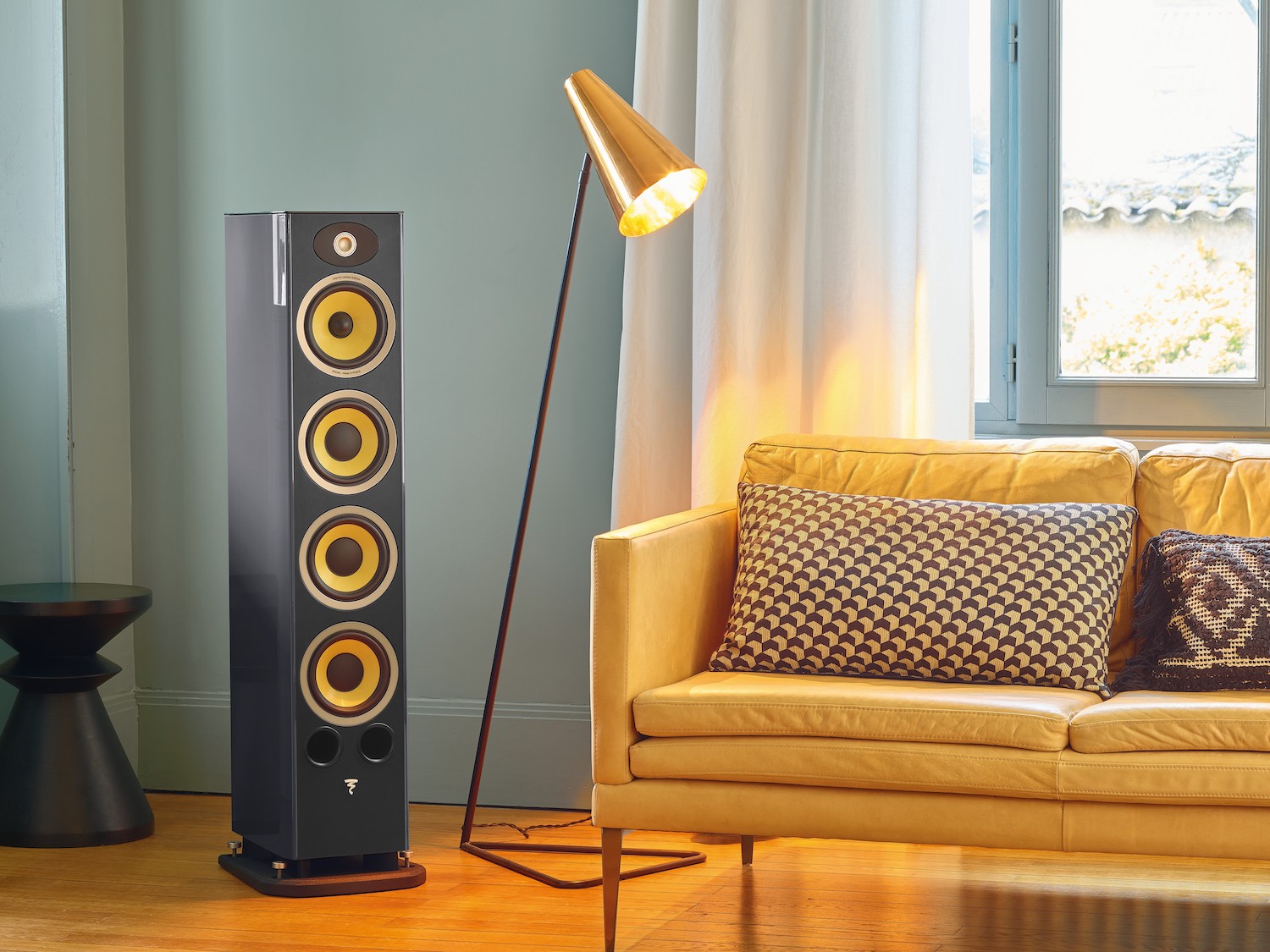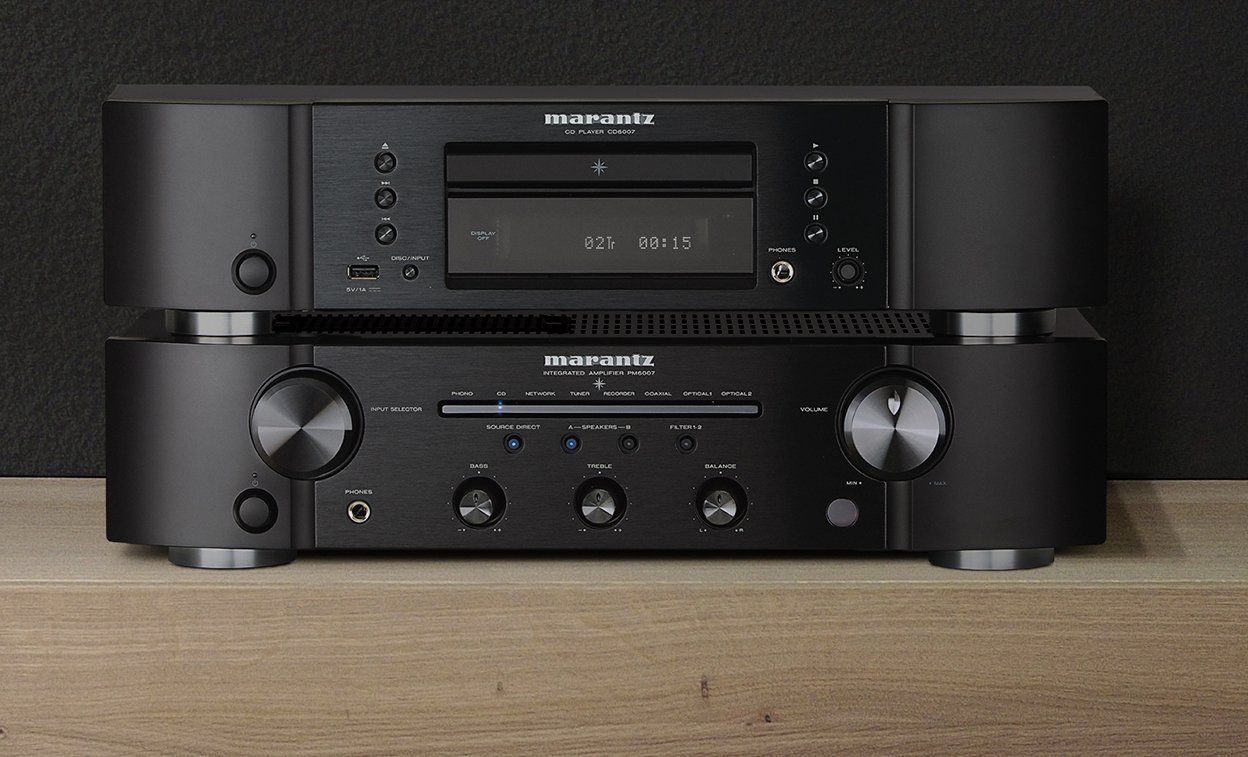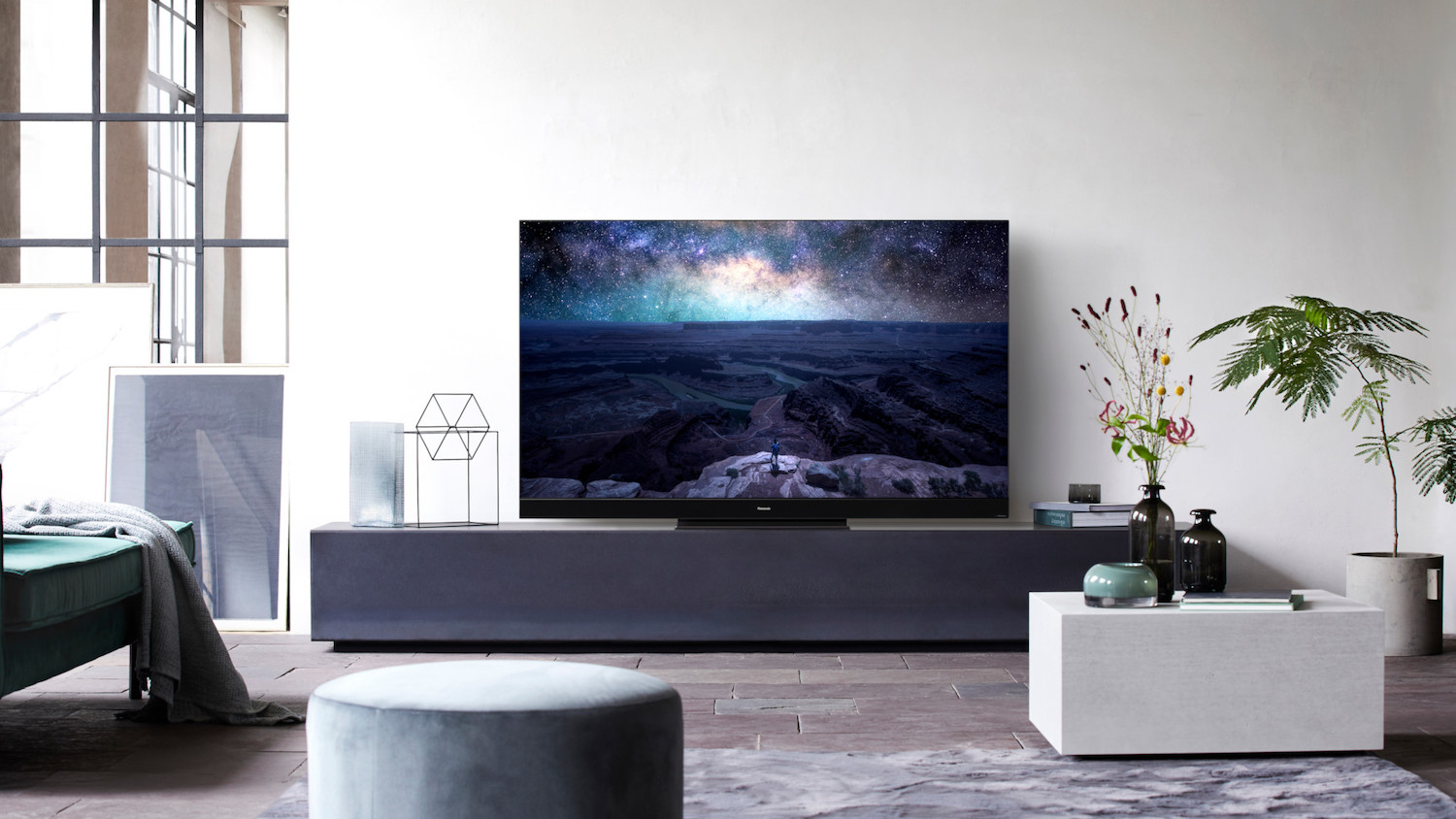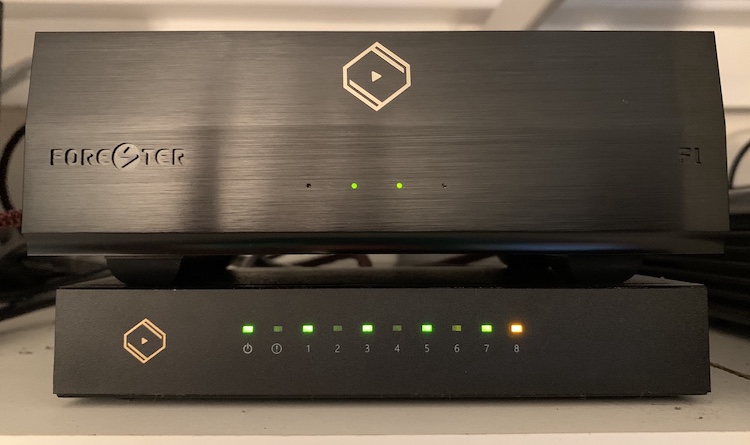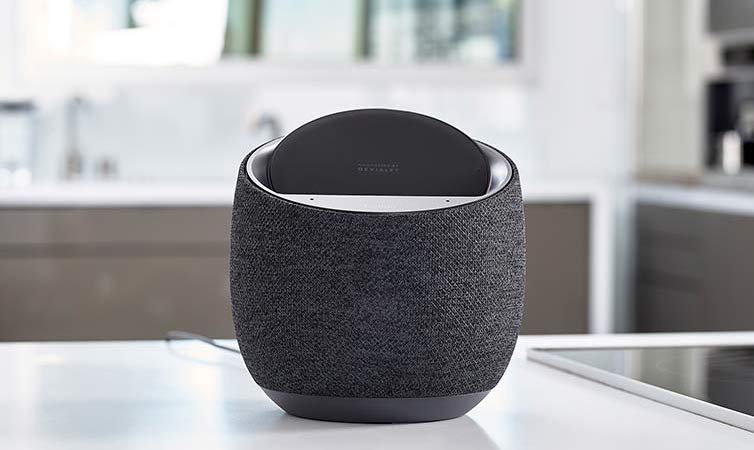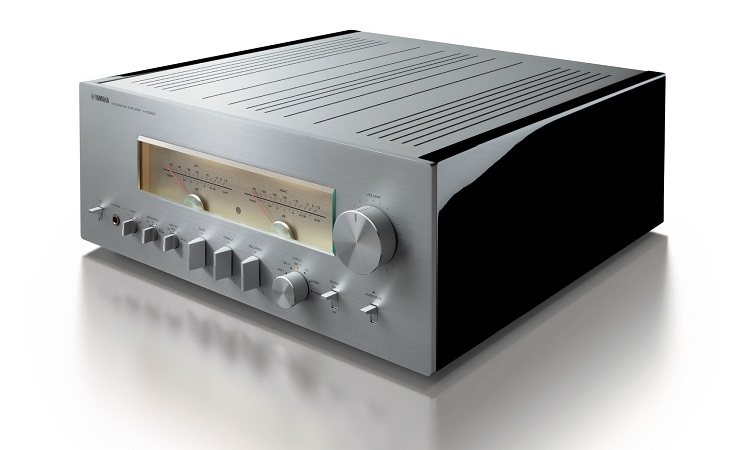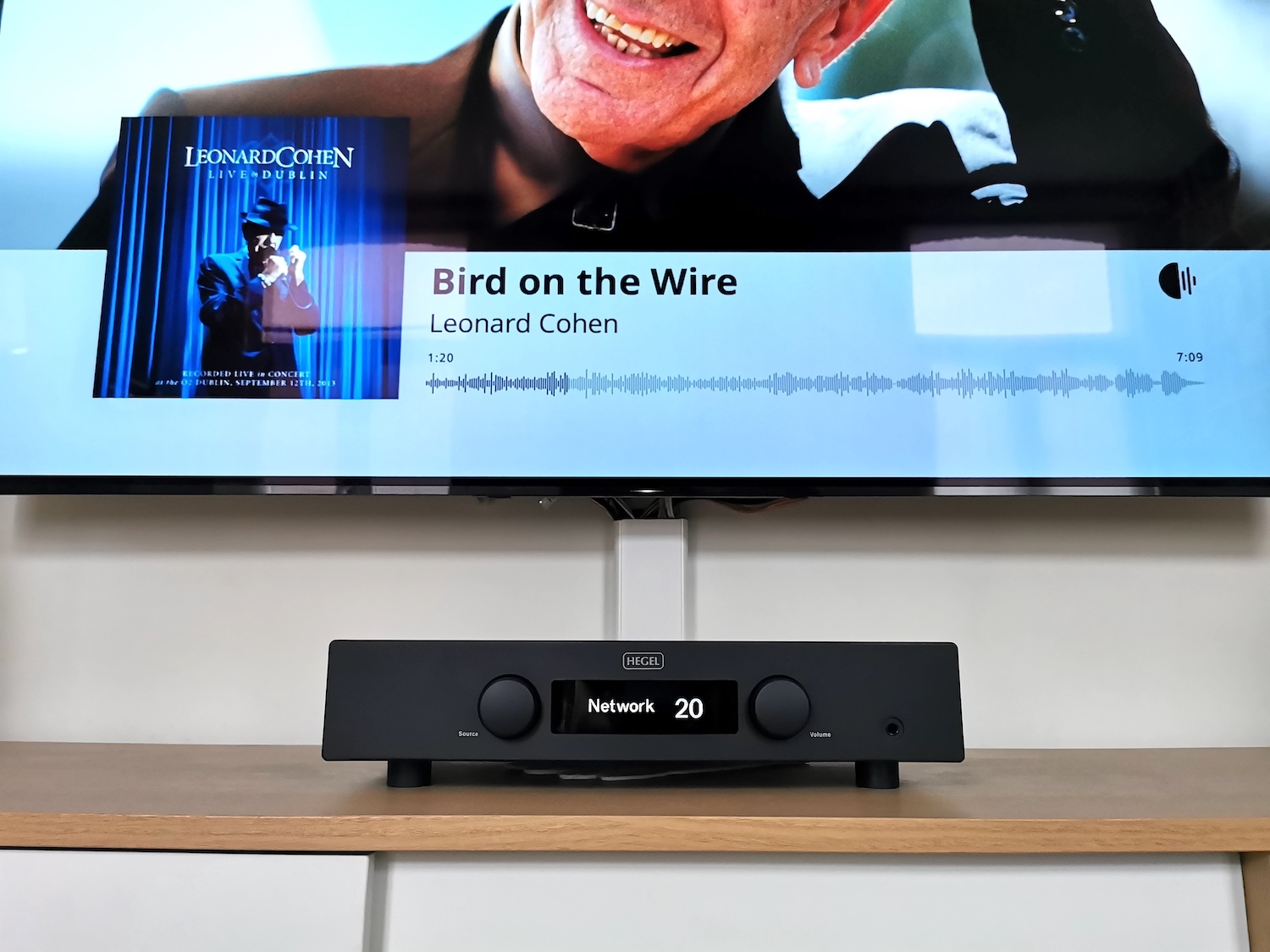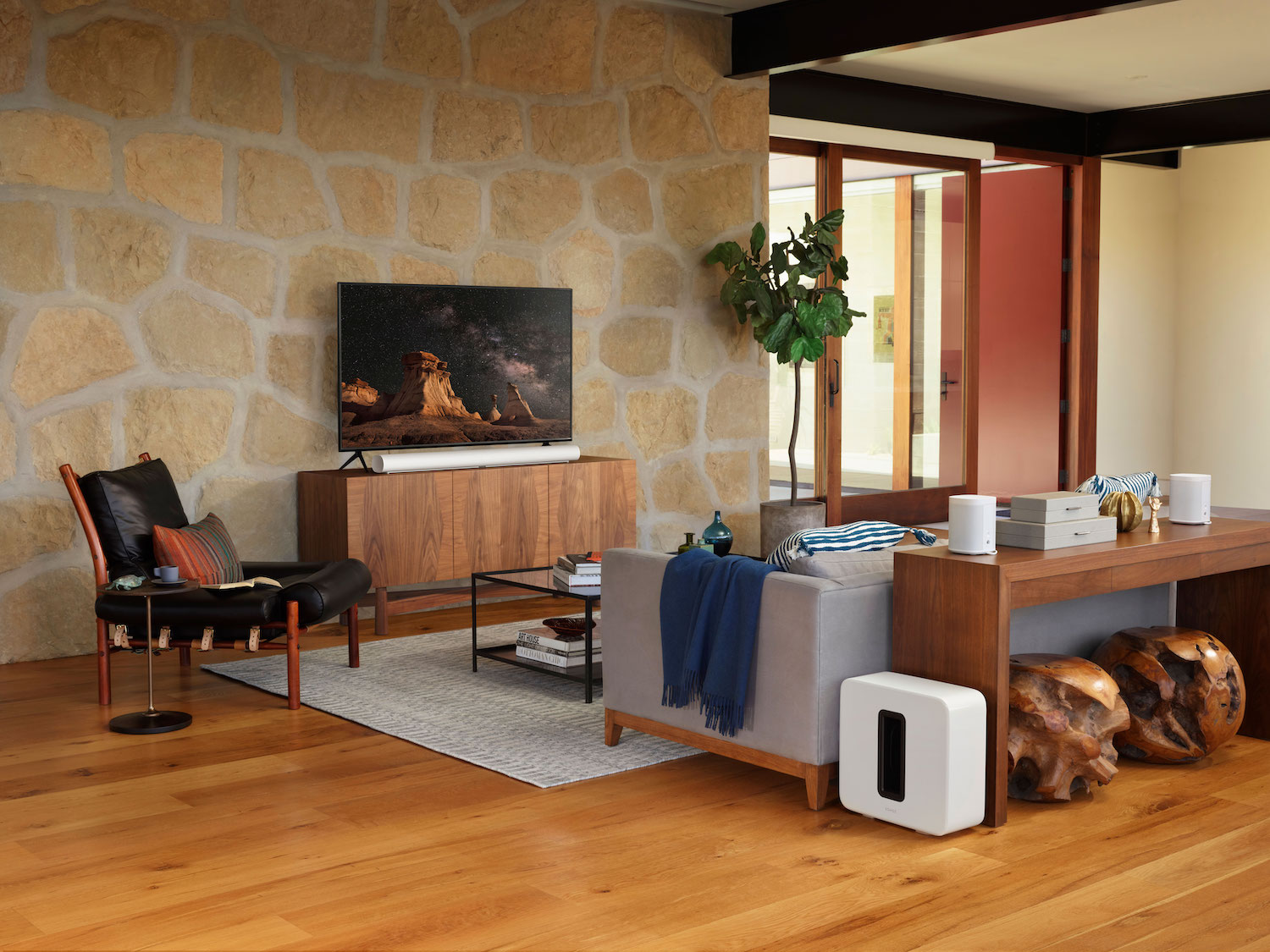It is impossible to imagine life without , stream music in any form. From your own collection, from streaming services or just internet radio. If something has taken off and shrunk CD production, it’s streaming. Hardware manufacturers are reaping the benefits. The drives that are always susceptible to interference are gone, something new has to come into your home and if you don’t stream, children will look at you compassionately.
Now the hardware is still manageable, writing software for a pleasant operation is a completely different field. Not everyone is given the opportunity to write a user interface of which the user intuitively understands how things fit together. Often the control of the hardware is not always successful, which can lead to crashes. One of the positive exceptions to this is Auralic with its Lightning DS platform for software and Tesla G2 platform for hardware. Resulting in a range of digital transports and streaming server / DACs. Within the package, a key component is the Aries G2.1 streaming transport, an upgrade of the esteemed Aries G2. HIFI.NL had the honor of being able to use and listen to the Aries G2.1 down to the finest detail. Refined with the knowledge of previously reviewed Auralic products, the installation was child’s play.
Auralic Aries G2.1: Description The Auralic Aries G2. 1 streaming transporter connects optionally via a Tri-band wireless connection or via wired Ethernet with Tidal (MQA) and Qobuz, with internet radio, with USB drives, NAS systems and optional internal storage. The Aries G2.1 can be used for Spotify Connect, Bluetooth and AirPlay, is fully Roon ready. All using playlists, memory caching, gapless playback and bit-perfect multiroom support. With its high computing power, the Aries G2.1 can handle files in DSD resolution up to DSD 512 and PCM to 32 bit / 384 kHz (highest resolutions over USB only).
Updated in the Aries version G2.1 compared to the G2 the chassis is made of aluminum and with an extra reinforced bottom plate. After that, the inside of the housing is clad with copper to effectively resist RFI. The Aries G2.1 stands on spring loaded feet to avoid mechanical influences. Each foot is adjusted with six springs to suit the weight and weight distribution of the device. A 4 inch 300 ppi color display shows you key functions such as playback status, configuration and artwork. In addition to the mechanical adjustment, the Aries G2.1 delivers more power to the USB output compared to the G2 for better adaptation to various brands of DACs. The software has now been brought to version 7.2.2.
The Auralic Aries G2.1 streaming transporter offers internal space for an SSD or HDD of 2 .5 inches in any capacity available. Auralic has recently released a major firmware update, bringing the possibility to play CDs with an attached optical drive via the Lightning DS software or to rip the contents of the CD (at the same time) and store them on a USB drive. If necessary even on your NAS. During playback, all the possibilities of the Auralic models are used, such as jitter reduction and upsampling.
During the ripping process, each sector is read twice. If there is a difference between the first and second read, the same sector will be read eight more times at a slower speed to get a 100 percent accuracy. The Tesla G2 platform on which the Aries G2.1 runs is designed with the sole aim of being a high quality reproduction, upgradable and is purely focused on audio. Tesla G2 works seamlessly with its own Auralic App and is the most powerful platform available for digital music playback and streaming, according to Auralic. Tesla G2 runs on a 1.2GHz quad-core processor. With 1GB of memory cache and 8GB of data storage, multiple applications can be loaded simultaneously and network noise is reduced because circuits are open for less time.
To take the Aries G2.1 to such a high level, it internally uses two Femto clocks, digital clocks with an extreme accuracy of which à One always works for the digital technology and the other clock is assigned to the USB ports. Two linear power supplies work together, the first to power the processor circuits, the LCD display and USB connected sources. The second power supply is intended for all sensitive audio components such as the Femto clocks and the USB output. The ActiveUSB is therefore more than just an asynchronous controller due to its low jitter, precision clock and separate power supply for USB.
EMI from USB sources does not stand a chance in the Aries G2.1. The power supplies are galvanically isolated from each other to prevent EMI interference. The various electrical circuits are also galvanically separated from each other internally, such as clock, processor and data transmission. Are there wishes and comments to link to the price for the Auralic Aries G2.1 streaming transporter of € 4. 699, -? Perhaps, the Aries G2.1 is only available in black, can only be operated with Apple iOS and not with Android and â ?? ¦. I would appreciate that when music is playing the display stays on and when nothing is playing the display dims. Now the display is either always on or always off after a few seconds while playing and at rest. Difficult for the purist who never switches off his streamer and wants to save the display at rest, but wants to see what he or she is playing.
Technical details
Lossless file format: AIFF, ALAC, APE, DFF, DSF, FLAC, OGG, WAV and WV
Lossy file format: AAC, MP3 , MQA and WMA
Sampling: PCM 44. 1KHz to 384 KHz to 32 Bit, DSD 64 to DSD 512 DoP and native
Controls: Lightning DS App for iOS, BubbleUPnP, Kazoo, Roon
Inputs: USB Drive, LAN, WiFi antenna
Digital Outputs: L-Link, Toslink, S / PDIF, A ES / EBU, USB
Streaming: UPnP / DLNA Media Server, TIDAL and Qobuz, Sublime + streaming, Internet Radio, AirPlay, Bluetooth, Songcast, RoonReady, …
Options: SSD or 2.5 HDD, remote control
Network: Gigabit Ethernet, Wireless: 802. 11 b / g / n / ac Tri-Band
Housing: Black Anodized, chassis solid aluminum one piece
Dimensions: 34 cm x 32 cm x 9 , 6cm
Weight: 9.3kg
Environment The listening takes place in the familiar home environment where the power supply is built with an AudioQuest Niagara 5000 mains filter and CrystalConnect power cords. Music storage and ethernet switch are Melco N 11 and S 100, for most of the playback I make using Roon Rock on a NUC elsewhere in the home. The DAC is a Metrum Acoustics Pavane, analog coupled with a Yter XLR interconnect to an Audia Flight Strumento No.1 preamplifier and again with Yter XLR to a FLS4 power amplifier. Crystal Cable Speak Reference connects my Spendor Classic 2/3 monitors to the amplifier, the speakers have Townshend Maximum Super Tweeters, underneath Townshend Podiums and Custom Design Fish Tank stands.
The protagonist in this review is an Auralic Aries G2.1 Streaming Transporter as the thing is called in full. Just say a streamer, connected with AudioQuest Vodka on the switch and with AudioQuest Diamond AES / EBU on the DAC. The choice for these cables and method of connection stems from working with and Aries G1, where it turned out to me that the Metrum DAC performs optimally with an AES / EBU cable and a notch less with USB, Coax or Toslink. The Auralic Aries G1 is my reference in this and in daily use. The fact that my system is structured in this way says nothing about the performance of other power cords, ethernet connections and various digital cables on the Aries G2.1. Everyone has their own preferences, budget and maybe things on the shelf. By way of illustration, in my second system, the Aries G2.1 also played for a while and did so impressively via a Grimm TPR AES / EBU cable.
Auralic joins the series of streamers known to me like Lumin , Cambridge Audio, Naim, Bryston, Metrum, Bluesound, dCS and more, brands that all have their pros and cons. Sometimes being very quirky, working with an extensive own App or rather leaning on UPnP and Roon. As an enthusiastic supporter of the convenience of Roon and the extensive extra information that Roon provides, most of the players mentioned have been used as Roon Endpoint. Just like I do with the Auralic Aries G1 and G2.1. The fact that Auralic has an extensive own App gives me the opportunity to keep my own music collection, built up over the years, separate from music services such as Tidal and Qobuz. I use Roon for my music, the Auralic Lightning App for Tidal.
If I do not have Roon, the Lightning software fully meets all the requirements that can be set for a modern streamer. That’s why I played with the Aries G2.1 as Roon Endpoint and used Lightning to discover new music. A dedicated storage was not built into the Aries G2.1, also not necessary at all if a Melco N 10 music server is present. With that I am wasting one plus of the Aries G2.1 compared to the Aries G1 in which no internal storage fits, there are still plenty of pluses left, I have noticed in the past period.
From G1 to G2.1 With both my own Aries G1 in house and the Aries G2.1 that was made available, a comparison cannot be ignored. Because why would you spend a lot more money for the same functionality if you are not going to use internal storage options. The operation is the same, the software is the same, the number of connections is the same with only one exception, even the appearance is not essentially different. The only visible exception is the Lightning Link at the rear with which a Master Clock, Upsampler and / or a DAC from Auralic can be linked jitter-free. Anyone who has had the pleasure of listening to that stack (the undersigned) knows what a great result is achievable. Back to mutual comparison. The most essential, strikingly audible difference between the G1 and the G2.1 is the G2.1 adding foundation to the music. The G1 has a reputation for being light in sound and too puristic for some already clear systems, the G2.1 does not so much bring a heavier bass response, it is rather deeper, more present, more neutral and correct.
A bass response that spreads further through the listening room, ensures that an orchestra can play to the full, that a person has a chest with air and a piano sounds longer in the dark notes . Almost the difference between a loudspeaker and the same loudspeaker with a high quality sighing subwoofer. In addition, in the G2.1 more subtle is present the degree of detail, the extra calm in the reproduction, the more holographic stereo image and the ease with which man and instrument are set off against the background. Even used exclusively as a Roon Endpoint, the G2.1 proves its added value in a beautiful system that knows how to reveal the differences. However, the memory of the observations does not so much concern the points mentioned, but rather the feeling, the experience, the imagination of the artist. n, the satisfaction of listening to music. If we were talking about wine, the G2.1 has a better finish while both are excellent in taste.
Sighs and pops After the direct comparison, there is much, very listened a lot to music, varying from French sigh girls to opera singers, from rough men to wimps, from solo instrument to orchestra or band. Divides into pop, jazz and classical. For example, I enjoyed a live recording of Carla Bruni at the Olympia in Paris. With only a small line-up and her own guitar, her voice is central, complete with recording errors, so that the CD has remained authentic. Introducing Bruni on a large stage is easy, sitting on a stool, radiating pleasure, which is rewarded by applause from an audience in which individual hands can be distinguished.
The live experience is even greater as piano and bass join in. The funny â ?? La dernière minuteâ ???? closes the concert, it seems so simple, but somewhere heavy tones appear, small subtle sounds can be perceived behind her voice, the audience goes wild at the end and finally someone bumps into a microphone. The Aries G2.1 seems to enjoy uncovering everything.
Also live is â ???? Stairway to heavenâ ????, performed exclusively on guitar by Rodrigo y Gabriela from the CD â ???? Live in Japanâ? ???. A whole CD with only two guitars is a bit too much for me, this song by Led Zeppelin has so much eloquence, power, softness to the point that it is a classic. This is where that extra foundation of the G2.1 is very welcome. A blow to the body of a guitar should be echoing, strings should resound in the body of the instrument and the Aries is a master of that. It can be even wilder in â ???? Diablo Rojoâ ???? with which the concert closes. As a music chain, try to really keep separating the two guitars and still let them flow together. Combine speed with long extinction, maintain rhythm and whip up both audience and soloists in the living room.
It is â ???? Timeâ ???? Pink Floyd says in a cacophony of bells, a constant heartbeat, wavy low that rolls across the room, echoing drums and vocals. Addicted to the LP, streaming has come a long way in my home and the LP quality has since surpassed. That has cost effort and a lot of money, the result is there and the Aries G2.1 makes an extra contribution. I own the album as a CD 44. 1 / 16 and as DSD 64, where Roon works with the Auralic Aries G2.1 to move from DSD 64 to go to PCM 176. 4 / 24 which can lock my DAC. The Aries lets you hear the differences clearly, the resolution, the foundation of the heartbeat, the DSD file makes more of it.
The Aries is anyway serving when it comes to filtering and converting. While playing you can adjust the filter ring from precise to dynamic, to balanced and soft. From very detailed to pleasant on the ear. It took some headaches and hours of listening before I figured out that â ???? Smoothâ ???? I like the most. Nice and spacious and forming a nice balance between the three other positions. A few more hours were needed to figure out whether upsampling brings or removes what. My DAC is hardly sensitive to it and does nothing to up- or down-sample itself. The Aries G2.1 (and also the Aries G1) do the resampling so correctly and without frills that I have it permanently turned on to 176. 4 or 192 depending on the source resolution. It is not unique for a streamer to be able to do that, over the years I have discovered that you can do better in the Auralic than leave it to an upsampling DAC. Almost every DAC (usually excluding R2R) has a sample rate at which it is least burdened with computing and performs the best. Unfortunately, the DAC generally lacks pure computing power and an Auralic does bring it.
To the North Almost classical music is â ???? Myopiaâ ???? from Agnes Obel. Her latest album that can project a bubble of sound in the listening room. A bell in which the sounds of acoustic instruments and the strangest electronic sounds can be heard. In this case, it is important that the chain, and the streamer as part of it, is able to separate all sounds from the reproducers. Nothing is more disturbing than listening to speakers that cannot. You can even point out the exact location with your eyes closed.
The Aries G2.1 largely helps to prevent that annoyance. This gives Obel’s polyphonic singing an added value, here and there a voice pops up, differing in placement of height, depth and width. It makes “broken sleep” to an experience where the tendency arises to turn the head in the direction of the voices. The frequent use of the cello keeps the rhythm, while long tones have the chance to fade into nothingness. What emerges is a painting of sounds and timbres, which can be distinguished from each other to a high degree, whereby the coherence is not lost.
What I can’t get enough of lately is â ???? Quiet winter night: An acoustic jazz projectâ? ??? of the Hoff Ensemble. Jazz, vocals, beautifully recorded and full of minute details as well as a powerful bass and full piano. The fact that I don’t understand a word of what is being sung is irrelevant. The extent to which the Aries G2.1 manages to deliver the stream to the DAC and the rest of the system. Perhaps this is an exceptional recording that reveals that the streamer part does have its own sound and is certainly not a conduit of ones and zeros as some think. I would love to get rid of that prejudice, unfortunately that still doesn’t work. It is going too far again to explain exhaustively that ones and zeros do not exist, that they are indications of a voltage difference that unfortunately is affected in many ways before it reaches our ears as audible sound. Just listen to an Auralic Aries G2.1 compared to other brands or types of streamers and discover the results for yourself. Even mutual results, because it is not without reason that the urge arose to upgrade my second system with my Aries G1 and to continue to feed the main system from the Aries G2.1 for good. A win-win situation for everyone, except for my bank account. Money in the bank does not make you happy, a good music reproduction all the more as an excuse I tell my environment.
Shine on Lightning DS Auralic can be praised for its excellent software under the name Lightning DS, the consistent quality of the products and the well thought-out equipment. The higher in the segment, the more Auralic sees the basic principles faithfully refining equipment in order to achieve an ever better display. Not because you have to, not because more money will flow into the till, but to give more pleasure to experiencing music. It has long been known in serious audio that an enclosure affects playback, that disconnecting equipment from the substrate can help, and that equipment must be able to â € œseeâ € each other electrically. but should not influence. Combating RFI / EMI and galvanically separating all inputs and outputs is expensive if you want to do that properly, the gain by hearing is greater than is often thought. Exactly the things that Auralic has paid attention to with the upgrade from the Aries G2 to the G2.1. The extra budget available compared to the Aries G1 also ended up well. All this makes the Auralic Aries G2.1 an attractive asset for those who stream their music rather than play it via CD or LP.
The operation is clear and straightforward. The options are widely adjustable in the software and the installation of an internal storage is obvious. Expansions in the form of a master clock, upsampler or DAC can be purchased from the same brand. Competition is fierce in the streamer world and every brand tries to differentiate itself. Because it is such a busy market, I therefore have some hesitation in rewarding the device with 5 stars and I would rather give it the designation â € œ Recommended!  € with full conviction. along. Because Auralic has succeeded in linking many consumer wishes, modern requirements, flexibility, design and seamless functioning with sound quality in order to win over the potential customer. Which â ???? sure enoughâ ???? will work with the Aries G2.1.
Auralic Aries G2 .1
â ?? ¬ 4. 699, – | Dynaudio Benelux




